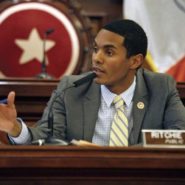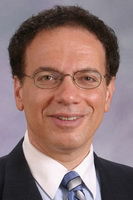By BOB HENNELLY
Jun 19, 2017 (Updated Jun 22, 2017)
(Reprinted with the Permission of TheChiefLeader.com)





A mass-casualty fire at a high-rise public-housing complex in London on June 14 has prompted City Council Member Elizabeth Crowley, chair of the Council’s Fire and Criminal Justice Committee, and Council Member Ritchie Torres, chair of the Public Housing Committee, to call for hearings to see whether lessons from that tragedy could be applied here.
Engulfed in 15 Minutes
At press time June 19, London fire officials had confirmed 79 deaths and 74 injuries, and officials warned that the death toll could go as high as 100. Dozens of people were still unaccounted for.
According to multiple press reports, the entire building was engulfed by fire within just 15 minutes. Residents were desperate to escape, prompting some of them to jump from their windows. In one instance, NBC News reported a mother threw her heavily blanketed baby out a nine-story window to someone on the ground who caught the infant.
Before 1 a.m. that morning, Firefighters were called to the scene at the 24-story “social housing” Grenfell Tower project in the White City district of London. It had 120 apartments that housed close to 600 people.
The heat of the fire was so intense it severely compromised what remained of the charred shell requiring that Firefighters coordinate with structural engineers the recovery phase of the response.
In the aftermath, experts flagged the cladding curtain-like covering that had been applied to the exterior of the Grenfell Tower last year as part of a multi-million-dollar building upgrade as a potential culprit for the smoke, heat, and intensity of the fire.
Aluminum/Plastic Mix
“That stuff has aluminum on the outside and a plastic core— just Google that 2015 New Year’s Eve fire at that luxury hotel in Dubai and you can see what happens with that material if the fire gets hot enough,” said Glenn Corbett, a Professor of Fire Science at John Jay College and the technical editor for Fire Engineering Magazine. “You do see some use of that material here, but in general it’s used in your one-story commercial application, like for a car dealership.”
Initial reports indicated there were no sprinklers present, and there was no central public-address system to reach tenants who were reportedly confused because they previously had been advised to follow ‘a stay-put’ or ‘shelter-in-place’ protocol in the event of a fire.
While the city’s Housing Authority projects are generally fireproofed, which means that fires stay contained in the residential unit where they start, the agency has historically had problems with the maintenance of elevators and basic emergency lighting. Last year, after the death of an 84-year-old man in an elevator in a Bronx project, a report by the Department of Investigation found “significant flaws” in how the agency responded to high-priority complaints about elevator breakdowns from residents.
“We have an obsolete public housing system and it is an area I think we need to explore,” said Councilman Torres in an interview at City Hall. “In my district in The Bronx, most of the private housing is that five- and six-story-tall multi-family older housing stock, and we need to look at these issues with this tragedy in mind.”
Last year the city reported 48 fire-related deaths, the lowest since reliable data has been compiled. The number of serious fires is also at a historical low. Yet several Council Members supported the call for hearings aimed at further improving fire safety with the London tragedy in focus.
“Even though it was in London, we must ask ourselves how is this city prepared for something like that—are there things we could address here,” to reduce the loss of life, said Council Member James Vacca.
‘Protect Other Housing’
“When I saw those pictures on the television, it was just heart-wrenching and I thought just what shortcomings played out there,” said Council Member Inez Barron. She added that she was concerned about any gap between the fire safety in newer high-rise residential buildings and the city’s older housing stock where most people live. “We should try and get those protections extended to the rest of our housing stock,” she said.
“This should alert us to the possibility of improvements we could make here with the help of relevant experts,” said Councilman Bill Perkins.
A veteran FDNY officer, who did not want his name used, told this newspaper he believed there was too much of a gap between the stringent fire-safety standards for commercial high-rise buildings and residential high-rises. “When you are responding to a job at a commercial building, you have a Fire Safety Director already on the site and the ability to communicate with each floor,” he said. “When you’re responding to a residential high-rise, you got yourself a doorman and no way to effectively talk to the tenants to give them direction.”
Toxicity Greater Now
“Fires are down, but since the 1970s, with the increased use of plastics in construction and in interiors, Firefighters are confronting more-aggressive and harder-to-fight fires that are also more toxic,” said Mr. Corbett. “And since 9/11, it’s harder to convince the public to shelter in place, as people in the World Trade Center were told to do.”
That, he continued, was why he was concerned about the fate of Council legislation that would require the retrofitting of all high-rise residential units with a public-address system to facilitate communication with residents in the event of an emergency. The proposal, which appears to have stalled, was prompted by a 2014 fatal fire in a Hell’s Kitchen residential high-rise during which a 27-year-old man attempted to leave his 32nd-floor apartment and died from smoke inhalation in the stairwell on the 31st floor.
Since the 1911 Triangle Shirtwaist Factory fire in lower Manhattan in which 146 garment workers died, it has taken mass-casualty events to spark significant upgrades of the city’s building and fire codes. Historically, the real estate industry has been successful at slowing legislation that adds additional costs.
In 1973, after two high-rise office fires that killed five people and hurt dozens, the city enacted Local Law 5 that required high-rise office buildings 10 stories or higher to have sprinkler systems, along with stair pressurization and compartmentalization to prevent the spread of fires. The real-estate industry litigated that legislation for five years.
Sprinkler Upgrade
In 1999, after two high-rise fires the year before that killed four civilians and three Firefighters, the city required most new residential buildings with four units or more to be outfitted with sprinklers. It also mandated sprinklers if existing units underwent significant remodeling that cost more than 50 percent of the buildings’ market value.
As significant as that bill was, Mayor Rudy Giuliani lamented, “I would like to see us go further. I don’t want us to lose the momentum that has come out of these terrible tragedies,” he said at the bill-signing.
Going back to the city’s requirement that sprinklers be installed in theaters in the 19th century, it has been a national leader in sprinkler application, according to Timothy Bowe, president of ABCO Peerless Sprinkler and the New York Mechanical Contractors Association. He said upgrades were always in response to high-profile fire tragedies, including the loss of Firefighters. A case in point would be the most recent upgrade to both the Building and Fire Codes after 9/11.
But, he said, gaps remain and universal retrofitting of sprinklers would save lives and property.
‘Enhance Apartment Safety’
“I think it would be a great way to enhance the life safety of these apartments out in the housing stock in the outer boroughs that have been there a very long time,” he said. “There is quite a bit of frame housing, and people are dying two, three at a time and nobody is paying attention to that. It is mostly for kids and older people.”
Mr. Bowe echoed the concerns of Council Member Barron about an existing disparity in fire- and life-safety measures, saying, “If you are in a Park Avenue building, you don’t have too much to worry about but if you are down in Alphabet City it is a totally different situation. And P.S., the landlords down there are chopping up spaces putting in partitions illegally, no sprinklers, and if there are sprinklers, they are not extending them. There are some horror stories down there.”
